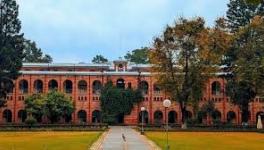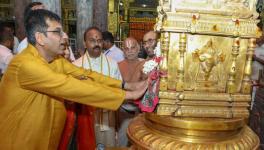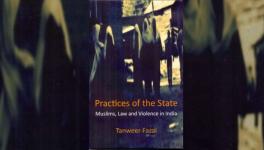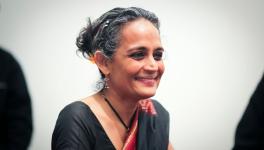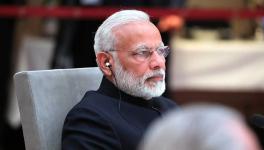How to Fight Communal Politics That Uses Ram Navami Processions
Representational use only.
Last week, across various parts of India, there were reports of tension and violence perpetrated by the Ram Navami enthusiasts. Processions were carried through Muslim-populated localities with highly provocative slogans and displays of crude weapons. Since the late 19th century, the Indian subcontinent has witnessed this phenomenon with varying intensities. Historians have been studying it for decades, and colonial administrators spent much energy determining the routes of religious processions which could avoid or minimise such conflicts.
A new report, “Routes of Wrath: Weaponising Religious Processions” by Chander Uday Singh, has pointed out how violence marred the Ram Navami processions last April as well. “The Ram Navami riots reflected the important role played by vigilante outfits and local branches of Hindu nationalist groups in building an ethnostate. Having sprouted fast across the country over recent years, it is apparent that several local Hindutva groups are focused on trying to homogenise the practices of Hinduism,” says the report.
The yatras this year, however, had another discernible pattern. In the provinces where the Bharatiya Janata Party has never been the sole hegemonic governing party, such as West Bengal, Bihar and Jharkhand, the intensity of the violence was more virulent than in previous years.
Maulana Sajjad (1880-1940) of the Imarat-e-Shariah, Phulwari Sharif, Patna, a fierce critic of Jinnah’s two-nation theory, wrote in his essay dated 20 February 1940, “Firqa-waaraana muaamlaat ka faisla kin usoolon per hona chahiye?—On what principles should communal affairs be decided?” that leaders of a multi-religious society like India should work out the limits of religious freedom, which should be based on the fair treatment of all sects. He writes that faith should not be demonstrated publicly in a manner that proves hazardous to other religions—it should not be provocative.
He advised that no religious procession of any sect or community should be allowed in public spaces. While all may not appreciate this suggestion today, he argues it is desirable and just. Moreover, he said, it will do away with frequent communal riots.
Unfortunately, despite recurrent troubles during processions almost for a century and a half, rather than working out an effective resolution, there has been an explosion of competitive identitarian politics. In the colonial and post-independence eras, both sides played such games whenever State power came into the hands of opportunistic (and occasionally communal) parties and partisan administrations. In recent years, things have changed drastically. Today, an overtly majoritarian party not only holds power at the Centre and many provinces but also has a near-absolute political hegemony in a large part of the country. Communalism has been embedded in the State apparatus, and even more importantly, a fairly big proportion of the masses has been communalised. The criminal justice system has always been weak, fragile and partisan and has failed to provide justice in cases of communal violence. In recent years, a large section of the media, particularly the electronic-visual media, has also contributed menacingly to spreading anti-Muslim hatred.
Across the world, there is unprecedented growth and expansion of competitive radicalisation. “Democratic authoritarianism” is a new worldwide phenomenon. It denotes the “use of democratic-looking institutions for the expansion of authoritarian forms of power”. This, argue Rochana Bajpai and Yasser Kureshi, “is a broader process involving mechanisms of institutional and ideational capture, which may be initiated and implemented by executives, legislatures, judiciaries as well as non-state organisations, often acting in tandem”. According to historian Ian Kershaw, this is “cumulative radicalisation”. As Asim Ali wrote explaining Kershaw in The Telegraph, the increasing radicalisation and the accelerating “erosion of civilised values” and “spiralling radicalisation of discrimination and persecution”, is driven not just by ideological extremism but also by competition within the party and State machinery for “power, prestige and enrichment”.
As noted earlier, West Bengal, Bihar and Jharkhand are yet to offer a complete hegemonic state power to the BJP. The conquest of Hindutva remains an unfinished task in these areas, where the complete subjugation, marginalisation, and invisibilisation of Muslims remains far from accomplished. No other route fetches as much majoritarian consolidation as the industry of communal hatred and polarisation—and this should explain the recent disturbances during the Ram Navami processions, some led by crowds bearing arms.
However, we must also acknowledge that today’s cumulative radicalisation has not happened suddenly or unfolded over just recent years. It is our post-independence understanding of fighting communalism that has been a bit flawed. The Nehruvian understanding was that Muslim communalism was a more potent force in the late-colonial era, for it got active prodding from the colonial state. But after independence, it is majority communalism which is a big danger. In this understanding, at the practical level of fighting communalism, it was forgotten how majority communalism had derived fodder from minority communalism. In other words, despite the varying implications of the two communalisms, there should not have been a let-off on the front of fighting both its variants. To this failure of secular politics, conservative and modern Muslim leaders have added their contributions. If today, sections of civil society find majoritarian impulses in the Constitution, the Hindu Right concurrently says the Constitution is not Hindu enough! Such corrosive jostling has reached a point where even the limited constitutional space minorities have is under severe threat.
Since 2014, India has also seen the outcome of grave errors committed in the 1980s reveal themselves. The Shah Bano case in 1985 opened the doors to making formerly local concerns into national issues—from Muslim Personal Law trumping gender justice to unlocking the Babri mosque and the transformation of local religious events, like Ram Navami processions, into semi-national affairs.
In the nineties, affluent subaltern Muslims, especially from artisanal communities, who have benefited from remittances from West Asia and economic liberalisation, have become the cynosure of right-wing Hindu mobilisations. A politics of jealousies and tensions—say, over the sight of well-built mosques with taller spires or flamboyant religious processions—has been at play for several decades. Its roots lie in grass-roots economic conflicts and rivalries between the Muslims and the corresponding Hindu castes and classes. These conflicts have repeatedly occurred as the saffronisation of subaltern Hindus moved alongside the rise of a neo-rich segment among Muslims. This has been particularly true in Bihar, Uttar Pradesh and West Bengal (more particularly its northern districts), where it did reflect in the growing representation in local bodies of a new crop of prominent Muslim figures.
Thirdly, Hindu elites working in West Asian countries, especially corporate executives, increasingly want to emphasise a Hindu identity on the world stage. On social media, we regularly hear and see them juxtapose their notions of Arab backwardness of the sixth or seventh century AD against their ideas of the superiority of Hindu kingdoms or governance standards during the same periods.
India’s Muslims and progressives must introspect and take stock of the emotional, psychological and economic roots of identitarian assertions and conflicts. Secular sections of the media must realise that merely critiquing Sangh Parivar notables such as MS Golwalkar or VD Savarkar, their writings and speeches, or those of conservative or regressive Muslims, will not help fight Neo Hindutva.
The need is to wean away a section of the newly-saffronised Hindus to the side of the pluralists. It will not happen so long as elite Muslims slide over to the saffron camp, regardless of the price ordinary Muslims pay. It will also not happen so long as ongoing debates on democratising Muslim-controlled institutions such as Aligarh Muslim University and the Wakf boards, or demands for justice based on gender, caste and region within Muslim communities are ignored by mainstream political parties and secular civil society. A broader and more credible anti-majoritarian resistance and mobilisation may not be possible without this effort of looking within as much as outside. Given the rapid pace of cumulative radicalisation on a global scale, there is no time to waste.
The author teaches modern and contemporary Indian History at Aligarh Muslim University. The views are personal.
Get the latest reports & analysis with people's perspective on Protests, movements & deep analytical videos, discussions of the current affairs in your Telegram app. Subscribe to NewsClick's Telegram channel & get Real-Time updates on stories, as they get published on our website.











